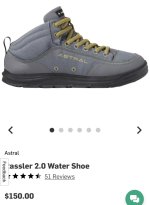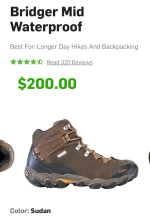@Glenn MacGrady Sorry, I assume people are familiar with it because I've spent so much time in them. A 'zero-drop' shoe is a shoe with no elevated heel, so that the foot rests parallel to the ground, much as it would while barefoot. ('Zero-drop' is used interchageably with 'barefoot'.) The modern barefoot trend was kickstarted by a book called "Born to Run" by Chris McDougall, about the Tarahumara Indians of Mexico, famous for running enormous distances in nothing but homemade sandals. McDougall also posits that a lot of running injuries are due to over-engineered footwear reducing the ability of the foot to function as evolution intended.
The thinking is, no heel-lift is a much more natural position for your feet to be in, and thus easier on your whole body. It can relieve plantar fascitis, knee problems, and lower back issues, because the shoe allows your body to distribute weight more naturally. In my own case, they've virtually eliminated lifelong knee and shin pain, and I've noticed improvement in balance, circulation, and foot flexibility.
'Ground feel' is something of a marketing hook, and thus what the majority of barefoot shoe makers advertise - think something along the lines of a synthetic moccassin. By and large it's rather pleasant hiking in them, but of course the next man may prefer something different. At a quick guess I would say I've done upward of 300 hiking and backpacking miles in zero-drops; close to 400 if I include portages. My coldwater paddling shoes are NRS neoprene booties, which are zero-drop by default, and yes, I've banged my ankles plenty of times.
What's great about Jim Green's offerings is that they've made barefoot boots with a decent sole, something that a nail on a job site won't immediately penetrate, and with decent leather, that looks like an actual boot. I've had a nail go entirely through my foot while wearing Lems (one of the zero-drop shoe makers that promotes 'ground feel'), and that's something you only want to happen once.
The AR8s I mentioned are definitely not a zero-drop, they're much more of a rugged, stiff boot with a lug sole. JG is also introducing a "rugged" trooper boot next year that's essentially a Pacific Northwest logging boot - much stiffer and with a giant lug sole.


